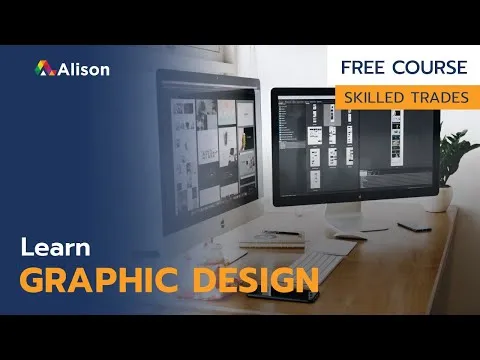
Innovative Design Systems for Editorial and Digital Media 
This course provides an introduction to innovative design systems for editorial and digital media, teaching students how to create unique designs and build a recognisable brand that engages its audience across all platforms and channels. ▼
ADVERTISEMENT
Course Feature
![]() Cost:
Cost:
Paid
![]() Provider:
Provider:
Domestika
![]() Certificate:
Certificate:
Paid Certification
![]() Language:
Language:
English
Course Overview
❗The content presented here is sourced directly from Domestika platform. For comprehensive course details, including enrollment information, simply click on the 'Go to class' link on our website.
Updated in [March 06th, 2023]
This course provides an overview of innovative design systems for editorial and digital media. Students will learn how to use typography, layout style, colour, and imagery to create a visual language that communicates to an audience and provides a strong identity to a brand. The vision of one designer is at the heart of every great publication, and students will learn about the influences that inspire him and his work.
The course will dive into editorial design to learn about the various levels involved, from the narrative to the structure. Students will learn what a design system is and how it works in media projects. It will guide them through the process of understanding a client's needs and translating them into print, web, and other designs.
The course will begin with typography to investigate the methods and processes involved in developing designs. It will then discuss grids and spacing, their importance, and how to use them. Students will learn how to use colour and imagery to express personality before looking at how to use designs across multiple mediums to create a cohesive visual identity. Finally, the course will show students how to present projects to clients and respond to their feedback.
[Applications]
This course provides students with the knowledge and skills to create innovative design systems for editorial and digital media. Students will learn how to use typography, layout style, colour, and imagery to create a visual language that communicates to an audience and provides a strong identity to a brand. They will also gain an understanding of the influences that inspire a designer and their work, as well as the various levels involved in editorial design. Additionally, students will learn what a design system is and how it works in media projects, as well as how to use colour and imagery to express personality. Finally, students will learn how to present their projects to clients and respond to their feedback. After completing this course, students will be able to apply their knowledge to create effective design systems for editorial and digital media.
[Career Paths]
1. Graphic Designer: Graphic designers create visual concepts, using computer software or by hand, to communicate ideas that inspire, inform, and captivate consumers. They develop the overall layout and production design for various applications such as advertisements, brochures, magazines, and corporate reports. With the rise of digital media, graphic designers are increasingly expected to be proficient in web design and animation software.
2. Digital Media Designer: Digital media designers create digital content for websites, mobile applications, and other digital platforms. They use a variety of tools and techniques to create interactive experiences that engage users and help them navigate digital spaces. They must be knowledgeable in user experience design, web development, and animation.
3. UX/UI Designer: UX/UI designers are responsible for creating user-friendly interfaces for websites and applications. They must be knowledgeable in user experience design, user interface design, and web development. They must be able to create intuitive and engaging experiences that meet the needs of users.
4. Brand Designer: Brand designers create visual identities for companies and organizations. They must be knowledgeable in typography, layout, colour, and imagery to create a visual language that communicates to an audience and provides a strong identity to a brand. They must be able to create cohesive visual identities across multiple mediums.
[Education Paths]
1. Bachelor of Arts in Graphic Design: This degree program focuses on the fundamentals of graphic design, such as typography, layout, color, and imagery. Students learn how to create visual language that communicates to an audience and provides a strong identity to a brand. They also learn about the influences that inspire design and how to use their designs across multiple mediums. Developing trends in this field include the use of digital tools and technologies, such as 3D printing and augmented reality.
2. Master of Fine Arts in Digital Media: This degree program focuses on the use of digital tools and technologies to create interactive media experiences. Students learn how to use software and hardware to create interactive experiences, such as virtual reality, augmented reality, and 3D printing. They also learn about the principles of design, such as typography, layout, color, and imagery. Developing trends in this field include the use of artificial intelligence and machine learning to create more immersive experiences.
3. Bachelor of Science in Computer Science: This degree program focuses on the fundamentals of computer science, such as programming, algorithms, and data structures. Students learn how to use software and hardware to create interactive experiences, such as virtual reality, augmented reality, and 3D printing. They also learn about the principles of design, such as typography, layout, color, and imagery. Developing trends in this field include the use of artificial intelligence and machine learning to create more immersive experiences.
4. Master of Science in Human-Computer Interaction: This degree program focuses on the design and development of user interfaces for digital products and services. Students learn how to use software and hardware to create interactive experiences, such as virtual reality, augmented reality, and 3D printing. They also learn about the principles of design, such as typography, layout, color, and imagery. Developing trends in this field include the use of artificial intelligence and machine learning to create more personalized user experiences.
Course Syllabus
What Is Editorial Design?
What Is a Design System?
Understanding the Client and the Audience
Spirit and Tone
Course Provider

Provider Domestika's Stats at AZClass
Discussion and Reviews
0.0 (Based on 0 reviews)
Explore Similar Online Courses

Drawing Characters in Perspective and with Foreshortening

Art Direction for Creative Visual Branding

Python for Informatics: Exploring Information

Social Network Analysis

Introduction to Systematic Review and Meta-Analysis

The Analytics Edge

DCO042 - Python For Informatics

Causal Diagrams: Draw Your Assumptions Before Your Conclusions

Whole genome sequencing of bacterial genomes - tools and applications

Complete Graphic Design Course Explaining Psychology (MUST KNOW)

Graphic Design Tutorial For Beginners Graphic Design (Full Course)

Graphic Design - Free Online Course with Certificate
 Related Categories
Related Categories
 Popular Providers
Popular Providers
 Popular Searches
Popular Searches
Quiz
 Submitted Sucessfully
Submitted Sucessfully
1. What is the main focus of this course?
2. What is the first step in the design process?
3. What is the purpose of a design system?


Start your review of Innovative Design Systems for Editorial and Digital Media